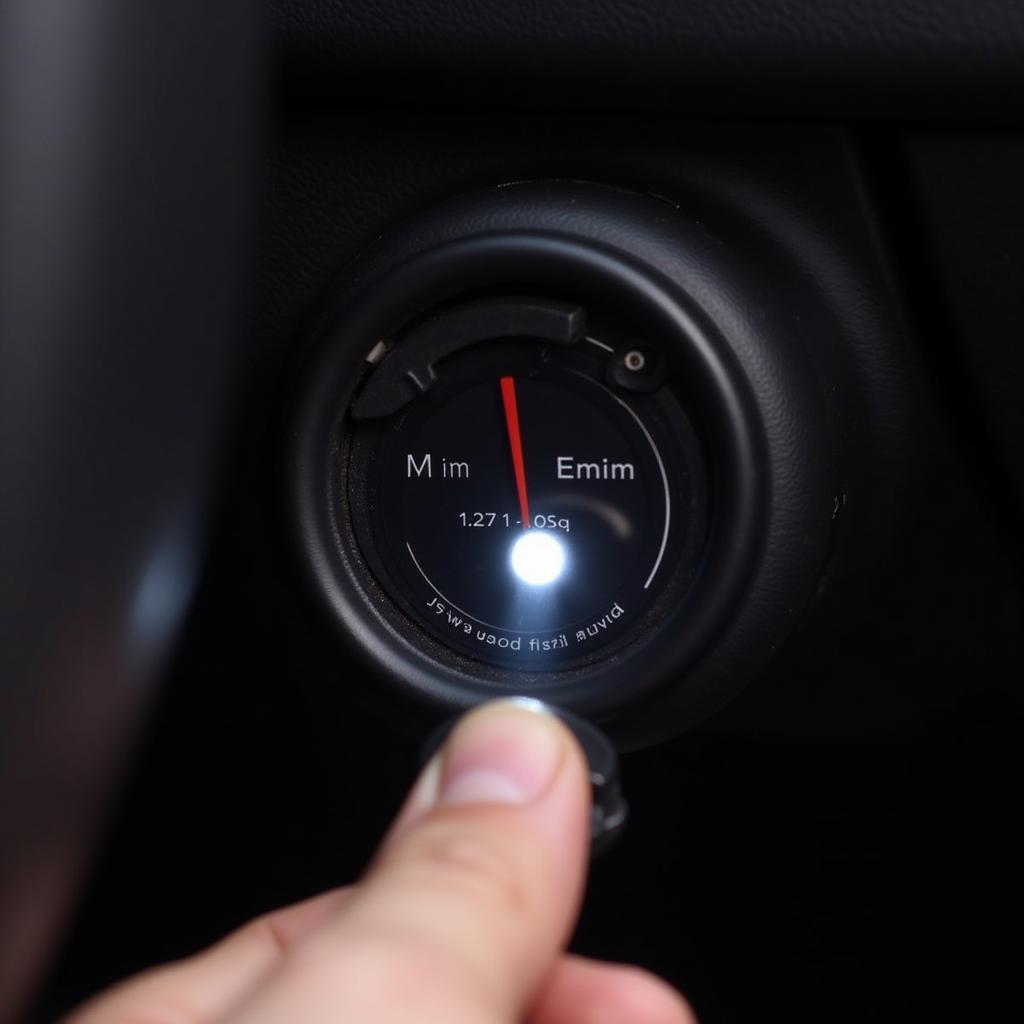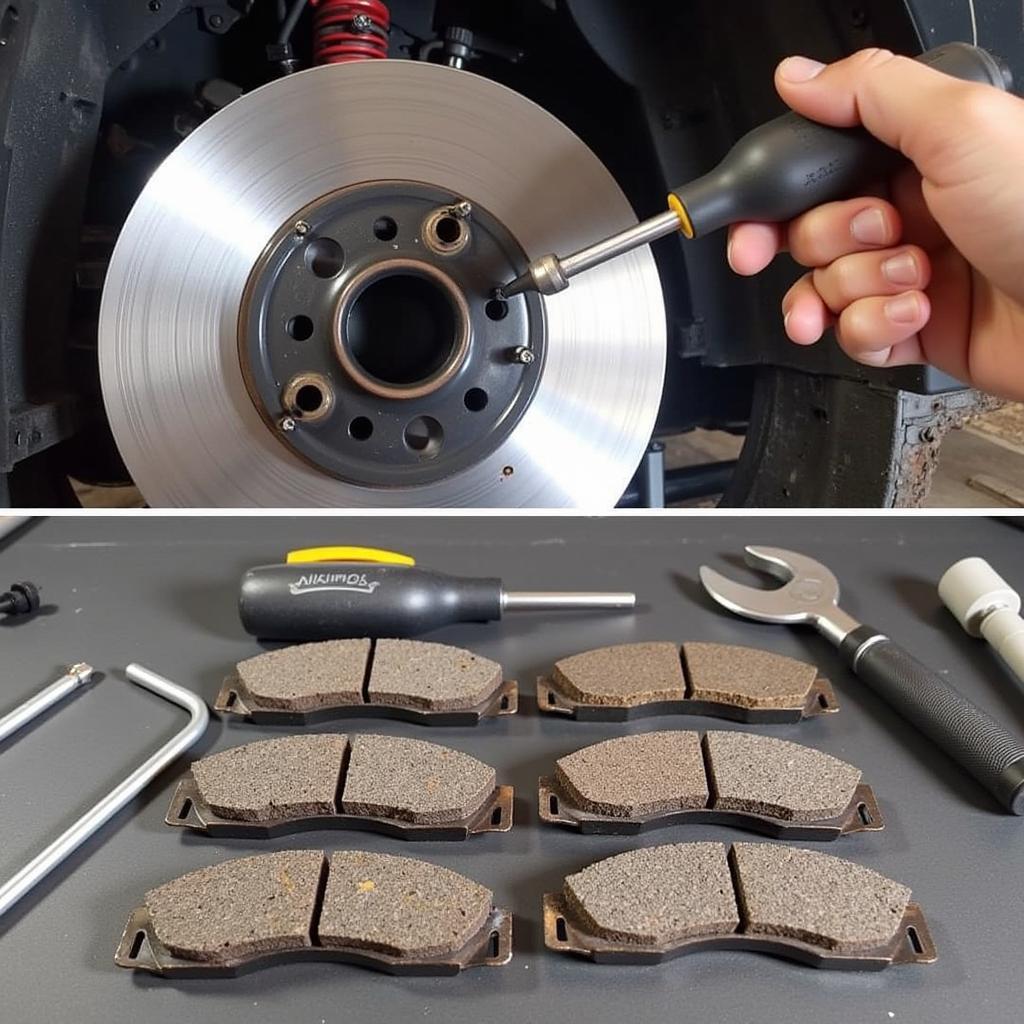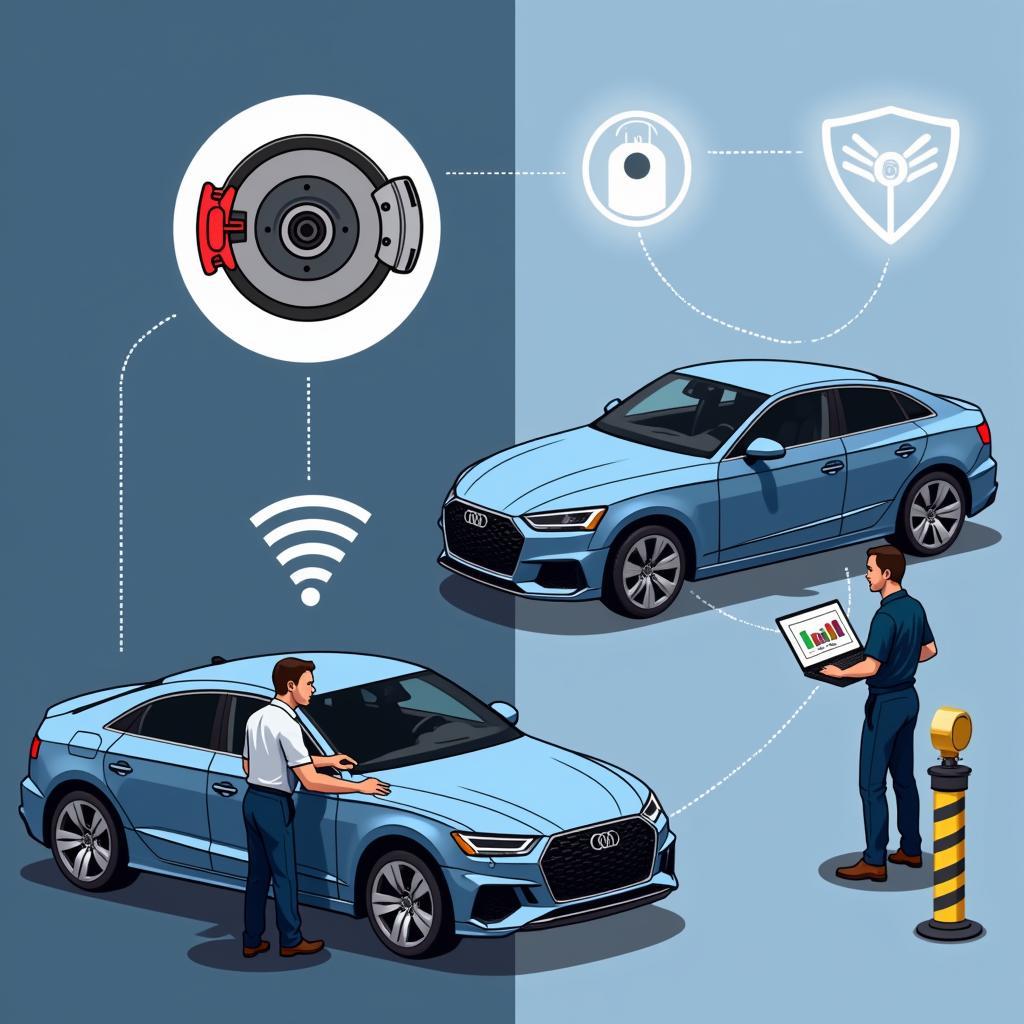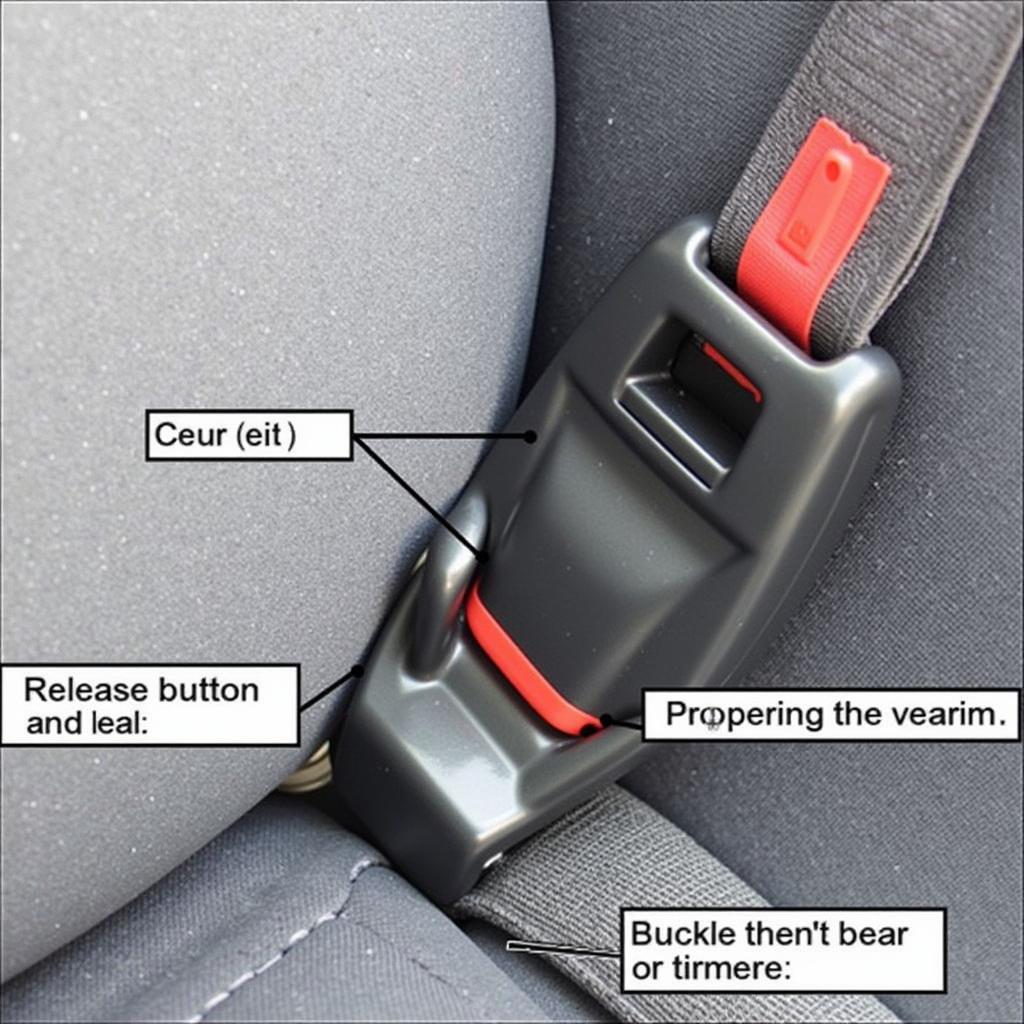Seeing a brake light warning light illuminated on your Audi dashboard can be a nerve-wracking experience. This light, often a red circle with an exclamation mark or the word “BRAKE” inside, signals a potential issue with your vehicle’s braking system. While it might seem alarming, understanding the common causes and solutions for an Audi brake light warning light can help you address the problem promptly and safely.
Common Causes of an Audi Brake Light Warning Light
Several factors can trigger the brake light warning light in your Audi. Some of the most frequent culprits include:
- Worn Brake Pads: Brake pads are designed to wear down over time. When they become too thin, a sensor triggers the warning light, indicating it’s time for a replacement.
- Low Brake Fluid Level: Brake fluid is crucial for transmitting hydraulic pressure to the braking system. If the fluid level is low due to a leak or worn brake components, the warning light will illuminate.
- Faulty Brake Light Switch: The brake light switch, located behind the brake pedal, activates the brake lights when you press the pedal. A malfunctioning switch can disrupt this signal, triggering the warning light.
- ABS Sensor Issues: Your Audi’s Anti-lock Braking System (ABS) relies on sensors to monitor wheel speed and prevent wheel lockup during braking. A faulty or dirty ABS sensor can also trigger the brake warning light.
- Issues with the Electronic Parking Brake: Many modern Audis feature electronic parking brakes. Problems with this system, such as a malfunctioning switch or motor, can also lead to a warning light.
Diagnosing the Problem
Identifying the specific cause behind the brake light warning light requires a systematic approach.
- Check Your Brake Fluid: Begin by inspecting the brake fluid level in the reservoir. If it’s low, this could be the primary cause. However, simply adding brake fluid without addressing the underlying cause of the low level isn’t a solution.
- Inspect Brake Pads: Examine your brake pads for signs of wear. If they appear thin or you notice a grinding sound while braking, it’s time for new pads.
- Scan for Error Codes: For a more precise diagnosis, consider connecting an OBD-II scanner to your Audi’s diagnostic port. This can reveal stored error codes related to the braking system, offering valuable clues about the problem’s root cause.
 Checking Audi Brake Fluid Level
Checking Audi Brake Fluid Level
Solutions and Repairs
Once you’ve identified the source of the problem, the next step is to address it promptly.
- Brake Pad Replacement: If your brake pads are worn, a qualified mechanic should replace them.
- Addressing Brake Fluid Leaks: A low brake fluid level often indicates a leak. Identifying and repairing the leak is crucial to restoring your braking system’s integrity.
- Replacing Faulty Components: Whether it’s a faulty brake light switch, a malfunctioning ABS sensor, or an issue with the electronic parking brake, replacing the faulty component is usually the most effective solution.
 Replacing Audi Brake Pads
Replacing Audi Brake Pads
“Ignoring a brake light warning light can lead to more serious and costly repairs down the line,” cautions Tim Miller, a seasoned Audi mechanic with over 20 years of experience. “Addressing the issue as soon as possible is essential for ensuring your safety on the road.”
Remote Diagnostic and Programming Services
In today’s technologically advanced automotive landscape, remote diagnostic and programming services offer a convenient and efficient way to address certain brake light warning light issues. Here’s how it works:
- Connection and Data Retrieval: Your vehicle is connected to a remote diagnostic system, often through a specialized device plugged into the OBD-II port. This system retrieves diagnostic data from your Audi’s onboard computer.
- Expert Analysis: Skilled technicians analyze the retrieved data to pinpoint the root cause of the warning light.
- Software Solutions: If the issue stems from a software glitch or requires a software update, technicians can often resolve it remotely by uploading the necessary software to your Audi’s system.
However, it’s essential to remember that not all brake light warning light issues can be fixed remotely. Problems requiring physical repairs or component replacements will still necessitate a visit to a qualified mechanic.
 Audi Remote Diagnostics
Audi Remote Diagnostics
Preventative Maintenance
While some brake light warning light causes are unavoidable due to normal wear and tear, proactive maintenance can help prevent others. Here are some tips:
- Regular Brake Inspections: Include a brake inspection during routine maintenance. This allows a mechanic to spot potential issues early on.
- Timely Brake Fluid Flush: Brake fluid should be flushed and replaced according to your Audi’s recommended maintenance schedule.
- Mindful Driving Habits: Avoid aggressive driving habits like hard braking, which can accelerate brake pad wear.
Conclusion
The brake light warning light in your Audi is a crucial safety feature. Understanding its common causes, implementing timely solutions, and adopting preventative measures can help you maintain your vehicle’s braking system and ensure a safe driving experience. While remote diagnostics and programming offer convenient solutions for certain issues, don’t hesitate to seek assistance from a qualified mechanic when necessary.
FAQs
Q: Can I still drive my Audi with the brake light warning light on?
A: While you might be able to drive a short distance, it’s strongly advised against it. Driving with a compromised braking system significantly increases the risk of an accident.
Q: How much does it cost to fix a brake light warning light on an Audi?
A: The cost varies depending on the underlying cause. Simple repairs like brake pad replacements are less expensive than complex issues requiring component replacements.
Q: How often should I replace my Audi’s brake pads?
A: Brake pad lifespan varies depending on driving conditions and habits. However, it’s generally recommended to have them inspected every 30,000 miles and replaced as needed.
Q: Can I check the brake fluid level myself?
A: Yes, you can locate the brake fluid reservoir under the hood and check the fluid level. Refer to your owner’s manual for the exact location and safe handling instructions.
Q: What does it mean if my brake pedal feels spongy?
A: A spongy brake pedal often indicates air in the brake lines or a problem with the master cylinder. Have your braking system inspected by a professional immediately.
Remember, maintaining a safe and reliable vehicle requires addressing potential issues promptly and following recommended maintenance schedules. If you encounter a brake light warning light, don’t hesitate to seek professional assistance to ensure your Audi remains safe to drive.

